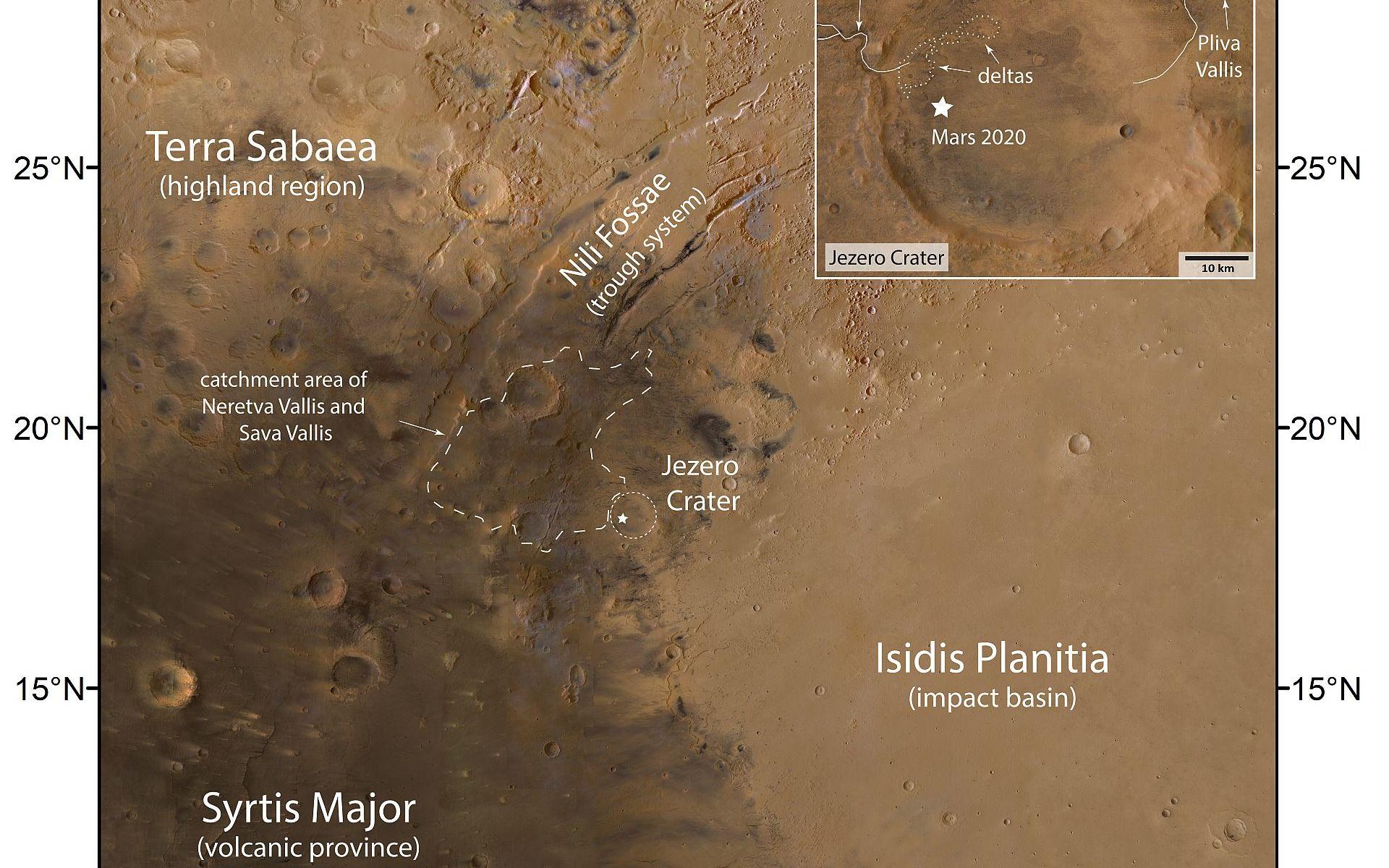There’s a reason Jezero Crater was chosen as the landing site for the Perseverance Rover: it is considered one of the likeliest places to find any evidence if Mars was ever habitable for long periods of time. In this great new flyby video from ESA, you can get a birds-eye look at Perseverance’s home.
Created from data ESA’s Mars Express and NASA’s Mars Reconnaissance Orbiter, the video takes you on an aerial tour of the crater. From this perspective, you can see the water features in this ancient impact crater and understand why this was considered one of the best places to explore Mars.
Perseverance landed in Jezero crater in February 2021. The diverse rocks and mineralogy found in and around Jezero crater tell the story of Mars’ complex geological history, which Perseverance is working to study and reveal. The roughly 45-km-wide crater is found on the border between the ancient region of Terra Sabaea – which contains rocks of up to 4.1 billion years old – and the younger Isidis Planitia basin, which formed via asteroid impact.
Did the crater ever host water? The evidence so far suggests the wall of Jezero is breached by three valleys that were once rivers of flowing water, and the crater is considered to be an ancient ‘open basin lake’ in that water once flowed both into and out of the crater, a type of basin that is especially promising in the hunt for life on Mars.

In the video, you’ll see an outflow channel snaking away from the crater wall and towards the camera perspective. Then you’ll see two inflow channels (Neretva Vallis and Sava Vallis, found on the western-northwestern rim of Jezero. the most prominent of these branches out into the crater to form an ancient fan-shaped river delta that was the landing site for Perseverance.
Or are these features created by ancient volcanism? Jezero sits next to an intriguing system of faults known as Nili Fossae and a prominent area of volcanism named Syrtis Major, where lava flowed some three billion years ago.
To really know for sure, scientists will need to study Mars close up. To that end, Perseverance is collecting samples of Martian rock and soil and putting them in special containers that will one day be picked up by a future sample return mission. NASA and ESA are working together on this mission, which ESA says will be more advanced than any robotic missions that have gone before, but it will revolutionize our understanding of both the Red Planet and the Solar System.

